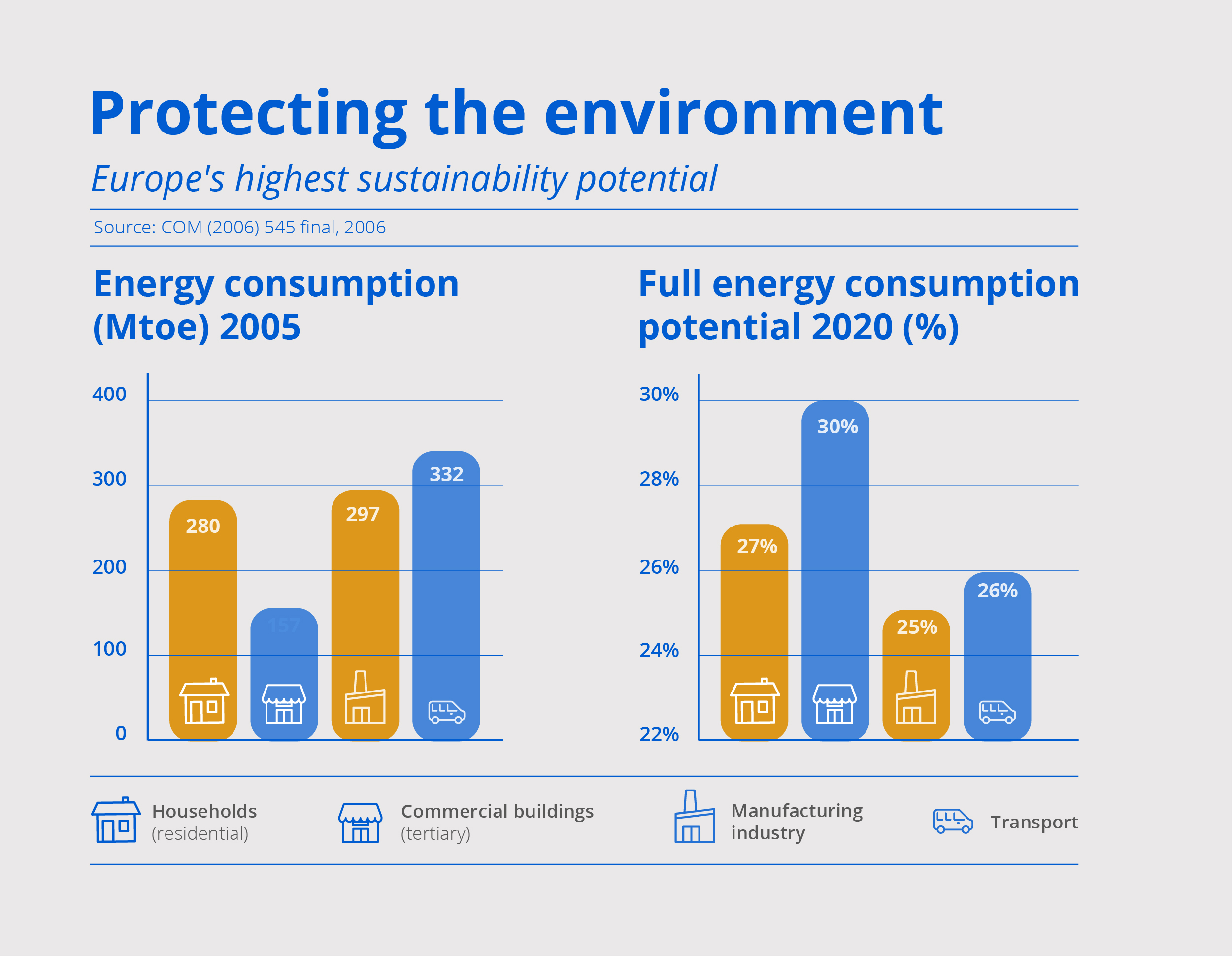
In Europe around 40%-50% of all energy used is in buildings, and up to 60% of that comes from heating them1. The burning of fossil fuels to create energy produces carbon dioxide – a ‘greenhouse gas’ that increases global warming and brings about climate change. So energy use in buildings, especially heating, creates a lot of carbon dioxide.
It is now widely accepted that global warming is one of the greatest threats to our way of life, even to our existence, that we have ever faced, and that strong action is needed to stop its acceleration and combat its effects.
There are a number of ways we can tackle this. Many people believe that investment in renewable or nuclear energy is the answer, but these technologies are expensive and each has its own limitations and potential problems.
A far more responsible approach is to first reduce demand, in line with the principles of trias energetica2, making it easier to meet that demand through other, more environmentally friendly sources. The simplest, most cost effective way to reduce demand is by improving the energy efficiency of our buildings, in other words to insulate them.
1 Insulation for Sustainability: A Guide, XCO2 Conisbee, p. 25
2 The trias energetica states that demand should first be reduced, as much remaining demand as possible should be supplied from renewable sources, and only then should any remaining demand be supplied through the efficient use of fossil fuels.
